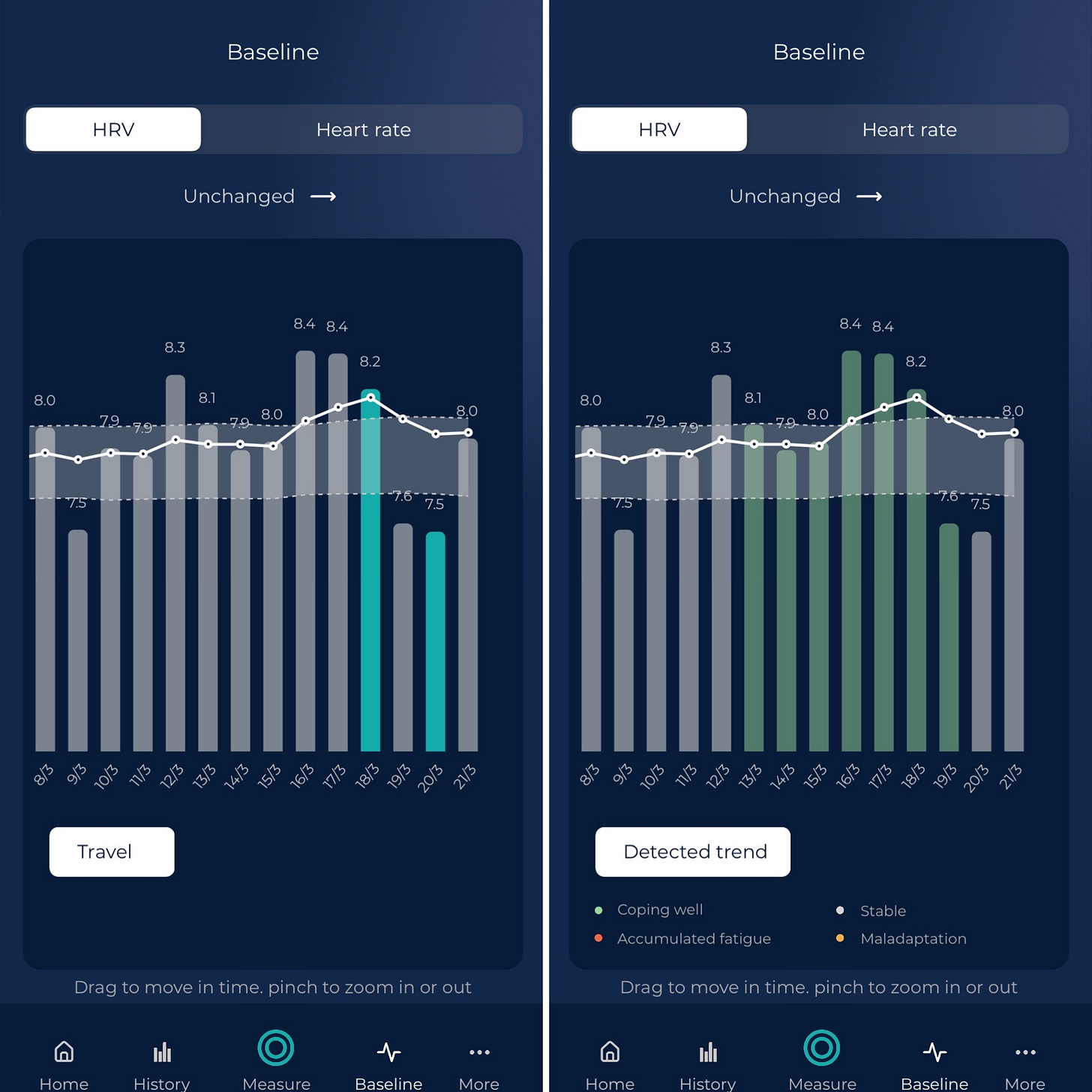Hi there 👋
I’ve been implementing some new features and visualizations in HRV4Training Pro. As previously discussed, you can now find Normalized HRV in the Overview page (as well as in the Coach Panel, in case you use the platform with your athletes).
Since the latest update, you can also find Normalized HRV under the Resting Physiology Analysis, together with heart rate, HRV, the coefficient of variation, and their baseline and normal ranges, so that data can always be easily contextualized with respect to what is normal for you (or your athletes). This is the analysis that also reports the most likely response (e.g. coping well, accumulating fatigue, etc.) given the various physiological signals, as covered here.
What’s normalized HRV again?
Mathematically, HRV metrics are related to the variability between RR intervals, which are inversely related to heart rate. As heart rate decreases, RR intervals lengthen, and there’s simply more "room" for variability. Without normalization, HRV can appear inflated in individuals with low heart rate and suppressed in those with higher heart rate, even if their autonomic modulation is similar.
At the individual level, On normalized HRV might provide useful insights too. For example, on days when heart rate drops and HRV is stable, normalized HRV actually reflects that despite more room for variability, your HRV has not increased, and is in fact lower than your normal. You can find some examples in the context of caloric deficit or cold exposure, here.

I hope you’ll find this addition useful in the context of better interpreting physiological responses to the various stressors we face.
Should We Test?
A few days ago, I received a great question from one of the athletes I coach. They were wondering whether we’d be including any specific tests, like a lactate threshold test, VO₂max assessment, or a critical power test, in the current training block, as we recently started working together.
It's a great question, and it taps into something many athletes wonder about: do we need lab tests or structured assessments to identify limiters and guide training? Or can we get the insights we need simply by training and analyzing workouts?
In this blog, I’ll answer these questions and provide an overview of what I consider useful and not-so-useful physiological tests for endurance athletes.
Discount for HRV4Training Pro: 20% off 🖥️
HRV4Training Pro is the ultimate platform to help you analyze and interpret your physiological data, for individuals and teams.
You can find a guide and overview here.
Try HRV4Training Pro for free at HRVTraining.web.app or use promo code SCIENCE for 20% off.
While we really appreciate the pledges on Substack, our writing here will always remain free, and Pro is the best way to support our work.
I thank you for that.
When using Pro, the app will also automatically recognize your account and add the Normal Range to the Baseline view, together with detected trends and additional annotations, which can help contextualizing longer-term changes.
You will also be able to pick rMSSD as the parameter to see on the homepage of the app.

See you next week!
Marco holds a PhD cum laude in applied machine learning, a M.Sc. cum laude in computer science engineering, and a M.Sc. cum laude in human movement sciences and high-performance coaching. He is a certified Ultrarunning Coach.
Marco has published more than 50 papers and patents at the intersection between physiology, health, technology, and human performance.
He is co-founder of HRV4Training, Endurance Coach at Destination Unknown, advisor at Oura, guest lecturer at VU Amsterdam, and editor for IEEE Pervasive Computing Magazine. He loves running.
Social:







